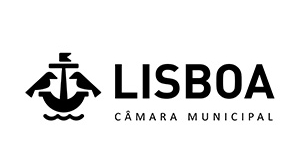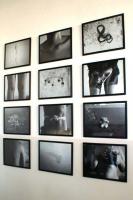 Beyond Boetjan and the South African connection, occupation of one form or another has always been part of the collective psyche of Mozambique. Attempts to explore this, however, are far more recent. A new mixed media exhibition, Ocupações Temporárias (temporary occupations), sees five young Mozambican artists attempt to do just that.
Beyond Boetjan and the South African connection, occupation of one form or another has always been part of the collective psyche of Mozambique. Attempts to explore this, however, are far more recent. A new mixed media exhibition, Ocupações Temporárias (temporary occupations), sees five young Mozambican artists attempt to do just that.
01.10.2011 | by Dave Durbach
 For four days last month, tens of thousands of fans from around the world descended on Essaouira, Morocco, for an African musical extravaganza: the annual festival Gnaoua et Musiques du Monde, now in its 14th edition. The protagonist of this musical feast was as usual Gnawa music: when to Gnawa masters like Mustapha Baqbou, Mohammed Guinea, and Hassan Boussou were not on the main public stages, they were performing lilas (night of healing) that began at midnight at different riads (traditional style Moorish house with a courtyard); and that is where true European aficionados went to trance and to learn the specifics of daqa marrakchiya (the percussive clap associated with the city of Marrakesh).
For four days last month, tens of thousands of fans from around the world descended on Essaouira, Morocco, for an African musical extravaganza: the annual festival Gnaoua et Musiques du Monde, now in its 14th edition. The protagonist of this musical feast was as usual Gnawa music: when to Gnawa masters like Mustapha Baqbou, Mohammed Guinea, and Hassan Boussou were not on the main public stages, they were performing lilas (night of healing) that began at midnight at different riads (traditional style Moorish house with a courtyard); and that is where true European aficionados went to trance and to learn the specifics of daqa marrakchiya (the percussive clap associated with the city of Marrakesh).
22.07.2011 | by Jorge de La Barre
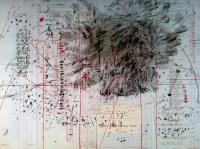 If any African artist working today can be described as internationally acclaimed, instantly recognizable, with a style marked by a unique personality, it is the South African William Kentridge. A ubiquitous presence in art festivals and exhibitions and in the permanent collections of the great museums, a recipient of numerous prizes, encomia, and honorary doctorates, Kentridge was born in Johannesburg in 1955, when popular uprisings and increasingly harsh repression drew clear lines between partisans and opponents of the racist authoritarian regime.
If any African artist working today can be described as internationally acclaimed, instantly recognizable, with a style marked by a unique personality, it is the South African William Kentridge. A ubiquitous presence in art festivals and exhibitions and in the permanent collections of the great museums, a recipient of numerous prizes, encomia, and honorary doctorates, Kentridge was born in Johannesburg in 1955, when popular uprisings and increasingly harsh repression drew clear lines between partisans and opponents of the racist authoritarian regime.
21.06.2011 | by Beatriz Leal Riesco
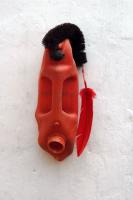 Extrapolating their critique to the demands placed upon Africa by the art market and the culture industry, these artists - Romuald Hazoumé, Dominique Zinkpé e Gérard Quenum - show themselves immune to, if not ignorant of, the self-absorption prevalent in contemporary art. They do not cease to question the processes according to which of African artists in general, and of those from Benin in specific, at once infiltrate and are assimilated by the systems of art and culture.
Extrapolating their critique to the demands placed upon Africa by the art market and the culture industry, these artists - Romuald Hazoumé, Dominique Zinkpé e Gérard Quenum - show themselves immune to, if not ignorant of, the self-absorption prevalent in contemporary art. They do not cease to question the processes according to which of African artists in general, and of those from Benin in specific, at once infiltrate and are assimilated by the systems of art and culture.
09.06.2011 | by Roberto Conduru
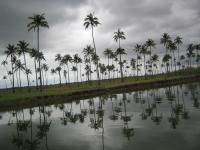 With the same boldness, but in very different conditions, a growing number of non-African youngsters adventure themselves in 21st century Africa. Refusing holiday packages where tourists are locked inside sterilized resorts, foreigners stroll around on their own improvised exploits, prepared with information of the networks and pocket guides. Rucksack on the back, they travel through countries that allow some daring. This way of travelling promotes meeting real people, and not only the crystalline waters or the exotic animals.
With the same boldness, but in very different conditions, a growing number of non-African youngsters adventure themselves in 21st century Africa. Refusing holiday packages where tourists are locked inside sterilized resorts, foreigners stroll around on their own improvised exploits, prepared with information of the networks and pocket guides. Rucksack on the back, they travel through countries that allow some daring. This way of travelling promotes meeting real people, and not only the crystalline waters or the exotic animals.
04.06.2011 | by Nuno Milagre
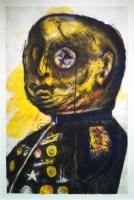 The notion of art as a vehicle for criticism and resistance was taken up in a programmatic manner by the South African group Resistance Art at the end of the nineteen-seventies to the end of confronting institutionalized racism in the then-totalitarian nation. A direct result of the 1976 Soweto uprising and the 1977 murder of the Black Consciousness leader Steve Biko, it represented a “galvanized anti-apartheid activism” in the artistic and cultural spheres. The idea of “culture as a weapon of political struggle,” affirmed by a multiethnic convocation of artists in Botswana in 1982, appears to be the overarching theme of the MOMA’s curators in the exhibition Impressions from South Africa, 1965 to Now, with an eye, perhaps, to those presently fomenting global crises and the sensibilities they must produce in an audience once again attuned to injustice and inequality (Image 1).
The notion of art as a vehicle for criticism and resistance was taken up in a programmatic manner by the South African group Resistance Art at the end of the nineteen-seventies to the end of confronting institutionalized racism in the then-totalitarian nation. A direct result of the 1976 Soweto uprising and the 1977 murder of the Black Consciousness leader Steve Biko, it represented a “galvanized anti-apartheid activism” in the artistic and cultural spheres. The idea of “culture as a weapon of political struggle,” affirmed by a multiethnic convocation of artists in Botswana in 1982, appears to be the overarching theme of the MOMA’s curators in the exhibition Impressions from South Africa, 1965 to Now, with an eye, perhaps, to those presently fomenting global crises and the sensibilities they must produce in an audience once again attuned to injustice and inequality (Image 1).
17.05.2011 | by Beatriz Leal Riesco
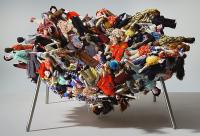 The streets of Brazil are full of startling design solutions by ordinary people driven by pure human need. Adélia Borges writes about a new exhibition space that celebrates a design culture of diversity.
The streets of Brazil are full of startling design solutions by ordinary people driven by pure human need. Adélia Borges writes about a new exhibition space that celebrates a design culture of diversity.
28.04.2011 | by Adélia Borges
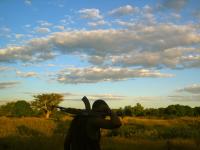 In the country with a Kalashnikov in its flag we were walking a long way to meet a musician and record some of his tunes for the soundtrack to a documentary. Tobias Dzandiwandira is a practically unknown talent, for he lives with his large family an hour and a half away from the nearest road in Mozambique’s centre-west, close to the border with Zimbabwe.
In the country with a Kalashnikov in its flag we were walking a long way to meet a musician and record some of his tunes for the soundtrack to a documentary. Tobias Dzandiwandira is a practically unknown talent, for he lives with his large family an hour and a half away from the nearest road in Mozambique’s centre-west, close to the border with Zimbabwe.
21.04.2011 | by Nuno Milagre
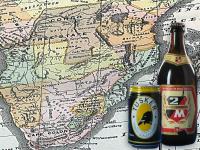 We decided to stick around for a beer at the end of a shooting day for the movie “The Hero” directed by Zezé Gamboa. We were on the Island of Luanda, where we had filmed from two in the afternoon to one in the morning. We stopped the car next to a stand, leaving the door open to keep listening to the pirated cassette playing on the car radio. In the group, the Angolans drink imported beer, Super Bock; the foreigners drink national beer, Cuca, each one savouring the exotic freshness of its own point of view while we talk in the shadow of a tranquil weekday dawn.
We decided to stick around for a beer at the end of a shooting day for the movie “The Hero” directed by Zezé Gamboa. We were on the Island of Luanda, where we had filmed from two in the afternoon to one in the morning. We stopped the car next to a stand, leaving the door open to keep listening to the pirated cassette playing on the car radio. In the group, the Angolans drink imported beer, Super Bock; the foreigners drink national beer, Cuca, each one savouring the exotic freshness of its own point of view while we talk in the shadow of a tranquil weekday dawn.
03.04.2011 | by Nuno Milagre
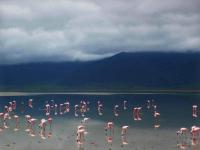 Here in Ngorongoro, the flamingos spread across the lake’s low waters, walk erratic steps and peck the mud with greed. Reflections of the flamingos and of the sky, punctuated by clouds, paint the water in blue, rose and white. The wind disperses the clouds ceasing their self-admiration on the mirror; the afternoon is going to heat up.
In northern Tanzania, West of the Kilimanjaro and on the way to the famous Serengeti National Park, exists one of the bigger cauldrons in the world: the Crater of Ngorongoro.
Here in Ngorongoro, the flamingos spread across the lake’s low waters, walk erratic steps and peck the mud with greed. Reflections of the flamingos and of the sky, punctuated by clouds, paint the water in blue, rose and white. The wind disperses the clouds ceasing their self-admiration on the mirror; the afternoon is going to heat up.
In northern Tanzania, West of the Kilimanjaro and on the way to the famous Serengeti National Park, exists one of the bigger cauldrons in the world: the Crater of Ngorongoro.
22.02.2011 | by Nuno Milagre
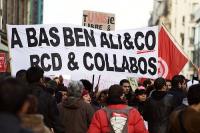 For the first time in decades, Tunisia is free of one-man rule. The extraordinary events of December 2010 and January 2011 have been nothing less than a political revolution: The consistent pressure of popular fury forced President Zine El Abidine Ben Ali first to make an unprecedented promise to relinquish power; then pushed him to step down; and finally halted an attempt at unconstitutional transfer of power, setting the stage for elections to be held at an undetermined date in the near to mid-term future.
For the first time in decades, Tunisia is free of one-man rule. The extraordinary events of December 2010 and January 2011 have been nothing less than a political revolution: The consistent pressure of popular fury forced President Zine El Abidine Ben Ali first to make an unprecedented promise to relinquish power; then pushed him to step down; and finally halted an attempt at unconstitutional transfer of power, setting the stage for elections to be held at an undetermined date in the near to mid-term future.
23.01.2011 | by Nadia Marzouki
 All Africa is an informal market, from Cape to Cairo, from Maputo to Marrakesh. And everything can be found; no VAT, no paperwork and sometimes even without having to leave the car. Briberies, embezzlements, speculation, benefits, manipulation, corruption. Things which are really handy, or might suddenly become so tomorrow.
All Africa is an informal market, from Cape to Cairo, from Maputo to Marrakesh. And everything can be found; no VAT, no paperwork and sometimes even without having to leave the car. Briberies, embezzlements, speculation, benefits, manipulation, corruption. Things which are really handy, or might suddenly become so tomorrow.
15.01.2011 | by Nuno Milagre
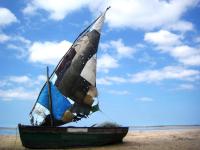 fter some back and forth travelling Lisbon-Madrid-Lisbon and some other back and forth travelling Maputo-Johannesburg-Maputo, I started finding linkage points between the voyage in the European Southwest and the voyage in the African Southeast. Both courses are about 375 miles long, from country to country, from capital to capital; syntonizing into another idiom when crossing the border, changing the bank notes for others – a step no longer necessary in the Iberian Peninsula. These are voyages in longitude, to the Orient: Madrid and Maputo; to the Occident: Lisbon and Johannesburg.
fter some back and forth travelling Lisbon-Madrid-Lisbon and some other back and forth travelling Maputo-Johannesburg-Maputo, I started finding linkage points between the voyage in the European Southwest and the voyage in the African Southeast. Both courses are about 375 miles long, from country to country, from capital to capital; syntonizing into another idiom when crossing the border, changing the bank notes for others – a step no longer necessary in the Iberian Peninsula. These are voyages in longitude, to the Orient: Madrid and Maputo; to the Occident: Lisbon and Johannesburg.
17.12.2010 | by Nuno Milagre
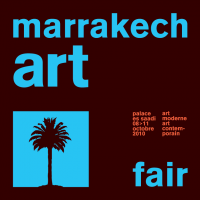 The Museum of Marrakech, situated in the heart of the old Medina, hosted Resonnance exhibition featuring a number of works by artists of Moroccan origins. Painting, photography, video art, graphic design, all the artistic forms gathered in this collective exhibition to celebrate the rich cultural background that brought into the artistic scene those artists: Mounir Fatmi, Aziza Alaoui, Chourouk Hriech, Mohamed El Baz, Lalla Essaydi, Malik Nejmi and others.
The Museum of Marrakech, situated in the heart of the old Medina, hosted Resonnance exhibition featuring a number of works by artists of Moroccan origins. Painting, photography, video art, graphic design, all the artistic forms gathered in this collective exhibition to celebrate the rich cultural background that brought into the artistic scene those artists: Mounir Fatmi, Aziza Alaoui, Chourouk Hriech, Mohamed El Baz, Lalla Essaydi, Malik Nejmi and others.
25.11.2010 | by Hasnae Fathi
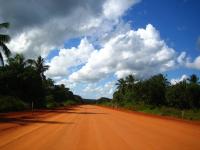 One Swahili word would travel to integrate countless different languages: safari, meaning ‘journey’. Turks, Chileans, Indonesians, Swedish, Australians and Lithuans, together with many more inhabitants of all the five continents, all understand this word, because it is part of their vocabulary, although in the stricter sense of a journey for wild life observation.
One Swahili word would travel to integrate countless different languages: safari, meaning ‘journey’. Turks, Chileans, Indonesians, Swedish, Australians and Lithuans, together with many more inhabitants of all the five continents, all understand this word, because it is part of their vocabulary, although in the stricter sense of a journey for wild life observation.
22.11.2010 | by Nuno Milagre
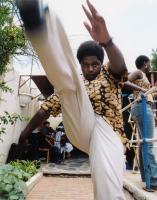 "Africa: See You, See Me!" portrays the history of African photography and its influence on non-African imaginings of Africa and the African diaspora in all their diversity. Together, the photographs are texts of African subjectivities, archives of history and societies in the making, and methods for understanding how images contribute to emancipation.
"Africa: See You, See Me!" portrays the history of African photography and its influence on non-African imaginings of Africa and the African diaspora in all their diversity. Together, the photographs are texts of African subjectivities, archives of history and societies in the making, and methods for understanding how images contribute to emancipation.
20.09.2010 | by Awam Amkpa
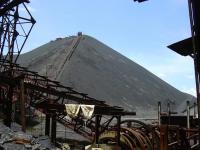 The independence of the Congo witnessed tensions between different groups which resulted among others to the Katangese secession eleven days after Belgium officially granted the Congo independence. Lubumbashi therefore became the capital of a state whose main goal was to perpetuate western industrialists economic interests and of the Union Minière du Haut Katanga. This history started ± 50 years ago since the assassination of Patrice Lumumba on the 17th of January 1961 up to the time Mzee Kabila took up the power through a statement rebellion movement.
The independence of the Congo witnessed tensions between different groups which resulted among others to the Katangese secession eleven days after Belgium officially granted the Congo independence. Lubumbashi therefore became the capital of a state whose main goal was to perpetuate western industrialists economic interests and of the Union Minière du Haut Katanga. This history started ± 50 years ago since the assassination of Patrice Lumumba on the 17th of January 1961 up to the time Mzee Kabila took up the power through a statement rebellion movement.
14.09.2010 | by association PICHA
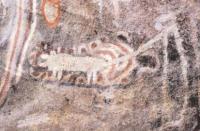 One of the most important archeological sites in southwest Angola, Tchitundo-hulo, lies in a semi-arid region on the edge of the Namib desert. The site comprises an imposing granite inselberg, with three smaller hills nearby. These smaller inselbergs are known as Tchitundo-hulo Mucai, Pedra da Lagoa (Lake Rock), and Pedra das Zebras (Zebra Rock). The inselbergs all feature carvings engraved upon the rockface.
One of the most important archeological sites in southwest Angola, Tchitundo-hulo, lies in a semi-arid region on the edge of the Namib desert. The site comprises an imposing granite inselberg, with three smaller hills nearby. These smaller inselbergs are known as Tchitundo-hulo Mucai, Pedra da Lagoa (Lake Rock), and Pedra das Zebras (Zebra Rock). The inselbergs all feature carvings engraved upon the rockface.
09.08.2010 | by Dario Melo
 Africa is portrayed as an over-determined image. In other words, a place capable of shaping the abundance of circulating discourses, the terms and labels for the continent and the situations of traumatic nature. The widespread geography that characterises Africa both internal and externally, the continent remains a space of ambivalence that still polarizes fundamental issues as human rights, racial equality, apartheid, subordination, hybridization, mixing, the displacement of people and cultures.
Africa is portrayed as an over-determined image. In other words, a place capable of shaping the abundance of circulating discourses, the terms and labels for the continent and the situations of traumatic nature. The widespread geography that characterises Africa both internal and externally, the continent remains a space of ambivalence that still polarizes fundamental issues as human rights, racial equality, apartheid, subordination, hybridization, mixing, the displacement of people and cultures.
23.05.2010 | by Marta Mestre
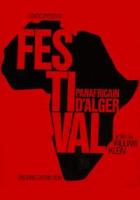 One part of the programm of the 7th Festival de Cine Africano de Tarifa, is called: "Utopia and Reality: 50 years of African Independencies?" Coinciding with the 50th anniversary of the Independence of 17 African countries, FCAT’10 offers a selection of African and non-African productions that explores, illustrates, questions and analyses this independence. There are films which talk about the life and ideas of figures like Aimé Césaire, Patrice Lumumba or Amilcar Cabral, or about the hope and dignity found after so many years of colonialism.
One part of the programm of the 7th Festival de Cine Africano de Tarifa, is called: "Utopia and Reality: 50 years of African Independencies?" Coinciding with the 50th anniversary of the Independence of 17 African countries, FCAT’10 offers a selection of African and non-African productions that explores, illustrates, questions and analyses this independence. There are films which talk about the life and ideas of figures like Aimé Césaire, Patrice Lumumba or Amilcar Cabral, or about the hope and dignity found after so many years of colonialism.
23.05.2010 | by Tarifa African Film Festival
 Beyond Boetjan and the South African connection, occupation of one form or another has always been part of the collective psyche of Mozambique. Attempts to explore this, however, are far more recent. A new mixed media exhibition, Ocupações Temporárias (temporary occupations), sees five young Mozambican artists attempt to do just that.
Beyond Boetjan and the South African connection, occupation of one form or another has always been part of the collective psyche of Mozambique. Attempts to explore this, however, are far more recent. A new mixed media exhibition, Ocupações Temporárias (temporary occupations), sees five young Mozambican artists attempt to do just that.  For four days last month, tens of thousands of fans from around the world descended on Essaouira, Morocco, for an African musical extravaganza: the annual festival Gnaoua et Musiques du Monde, now in its 14th edition. The protagonist of this musical feast was as usual Gnawa music: when to Gnawa masters like Mustapha Baqbou, Mohammed Guinea, and Hassan Boussou were not on the main public stages, they were performing lilas (night of healing) that began at midnight at different riads (traditional style Moorish house with a courtyard); and that is where true European aficionados went to trance and to learn the specifics of daqa marrakchiya (the percussive clap associated with the city of Marrakesh).
For four days last month, tens of thousands of fans from around the world descended on Essaouira, Morocco, for an African musical extravaganza: the annual festival Gnaoua et Musiques du Monde, now in its 14th edition. The protagonist of this musical feast was as usual Gnawa music: when to Gnawa masters like Mustapha Baqbou, Mohammed Guinea, and Hassan Boussou were not on the main public stages, they were performing lilas (night of healing) that began at midnight at different riads (traditional style Moorish house with a courtyard); and that is where true European aficionados went to trance and to learn the specifics of daqa marrakchiya (the percussive clap associated with the city of Marrakesh).  If any African artist working today can be described as internationally acclaimed, instantly recognizable, with a style marked by a unique personality, it is the South African William Kentridge. A ubiquitous presence in art festivals and exhibitions and in the permanent collections of the great museums, a recipient of numerous prizes, encomia, and honorary doctorates, Kentridge was born in Johannesburg in 1955, when popular uprisings and increasingly harsh repression drew clear lines between partisans and opponents of the racist authoritarian regime.
If any African artist working today can be described as internationally acclaimed, instantly recognizable, with a style marked by a unique personality, it is the South African William Kentridge. A ubiquitous presence in art festivals and exhibitions and in the permanent collections of the great museums, a recipient of numerous prizes, encomia, and honorary doctorates, Kentridge was born in Johannesburg in 1955, when popular uprisings and increasingly harsh repression drew clear lines between partisans and opponents of the racist authoritarian regime.  Extrapolating their critique to the demands placed upon Africa by the art market and the culture industry, these artists - Romuald Hazoumé, Dominique Zinkpé e Gérard Quenum - show themselves immune to, if not ignorant of, the self-absorption prevalent in contemporary art. They do not cease to question the processes according to which of African artists in general, and of those from Benin in specific, at once infiltrate and are assimilated by the systems of art and culture.
Extrapolating their critique to the demands placed upon Africa by the art market and the culture industry, these artists - Romuald Hazoumé, Dominique Zinkpé e Gérard Quenum - show themselves immune to, if not ignorant of, the self-absorption prevalent in contemporary art. They do not cease to question the processes according to which of African artists in general, and of those from Benin in specific, at once infiltrate and are assimilated by the systems of art and culture.  With the same boldness, but in very different conditions, a growing number of non-African youngsters adventure themselves in 21st century Africa. Refusing holiday packages where tourists are locked inside sterilized resorts, foreigners stroll around on their own improvised exploits, prepared with information of the networks and pocket guides. Rucksack on the back, they travel through countries that allow some daring. This way of travelling promotes meeting real people, and not only the crystalline waters or the exotic animals.
With the same boldness, but in very different conditions, a growing number of non-African youngsters adventure themselves in 21st century Africa. Refusing holiday packages where tourists are locked inside sterilized resorts, foreigners stroll around on their own improvised exploits, prepared with information of the networks and pocket guides. Rucksack on the back, they travel through countries that allow some daring. This way of travelling promotes meeting real people, and not only the crystalline waters or the exotic animals.  The notion of art as a vehicle for criticism and resistance was taken up in a programmatic manner by the South African group Resistance Art at the end of the nineteen-seventies to the end of confronting institutionalized racism in the then-totalitarian nation. A direct result of the 1976 Soweto uprising and the 1977 murder of the Black Consciousness leader Steve Biko, it represented a “galvanized anti-apartheid activism” in the artistic and cultural spheres. The idea of “culture as a weapon of political struggle,” affirmed by a multiethnic convocation of artists in Botswana in 1982, appears to be the overarching theme of the MOMA’s curators in the exhibition Impressions from South Africa, 1965 to Now, with an eye, perhaps, to those presently fomenting global crises and the sensibilities they must produce in an audience once again attuned to injustice and inequality (Image 1).
The notion of art as a vehicle for criticism and resistance was taken up in a programmatic manner by the South African group Resistance Art at the end of the nineteen-seventies to the end of confronting institutionalized racism in the then-totalitarian nation. A direct result of the 1976 Soweto uprising and the 1977 murder of the Black Consciousness leader Steve Biko, it represented a “galvanized anti-apartheid activism” in the artistic and cultural spheres. The idea of “culture as a weapon of political struggle,” affirmed by a multiethnic convocation of artists in Botswana in 1982, appears to be the overarching theme of the MOMA’s curators in the exhibition Impressions from South Africa, 1965 to Now, with an eye, perhaps, to those presently fomenting global crises and the sensibilities they must produce in an audience once again attuned to injustice and inequality (Image 1).  The streets of Brazil are full of startling design solutions by ordinary people driven by pure human need. Adélia Borges writes about a new exhibition space that celebrates a design culture of diversity.
The streets of Brazil are full of startling design solutions by ordinary people driven by pure human need. Adélia Borges writes about a new exhibition space that celebrates a design culture of diversity.  In the country with a Kalashnikov in its flag we were walking a long way to meet a musician and record some of his tunes for the soundtrack to a documentary. Tobias Dzandiwandira is a practically unknown talent, for he lives with his large family an hour and a half away from the nearest road in Mozambique’s centre-west, close to the border with Zimbabwe.
In the country with a Kalashnikov in its flag we were walking a long way to meet a musician and record some of his tunes for the soundtrack to a documentary. Tobias Dzandiwandira is a practically unknown talent, for he lives with his large family an hour and a half away from the nearest road in Mozambique’s centre-west, close to the border with Zimbabwe.  We decided to stick around for a beer at the end of a shooting day for the movie “The Hero” directed by Zezé Gamboa. We were on the Island of Luanda, where we had filmed from two in the afternoon to one in the morning. We stopped the car next to a stand, leaving the door open to keep listening to the pirated cassette playing on the car radio. In the group, the Angolans drink imported beer, Super Bock; the foreigners drink national beer, Cuca, each one savouring the exotic freshness of its own point of view while we talk in the shadow of a tranquil weekday dawn.
We decided to stick around for a beer at the end of a shooting day for the movie “The Hero” directed by Zezé Gamboa. We were on the Island of Luanda, where we had filmed from two in the afternoon to one in the morning. We stopped the car next to a stand, leaving the door open to keep listening to the pirated cassette playing on the car radio. In the group, the Angolans drink imported beer, Super Bock; the foreigners drink national beer, Cuca, each one savouring the exotic freshness of its own point of view while we talk in the shadow of a tranquil weekday dawn.  Here in Ngorongoro, the flamingos spread across the lake’s low waters, walk erratic steps and peck the mud with greed. Reflections of the flamingos and of the sky, punctuated by clouds, paint the water in blue, rose and white. The wind disperses the clouds ceasing their self-admiration on the mirror; the afternoon is going to heat up.
In northern Tanzania, West of the Kilimanjaro and on the way to the famous Serengeti National Park, exists one of the bigger cauldrons in the world: the Crater of Ngorongoro.
Here in Ngorongoro, the flamingos spread across the lake’s low waters, walk erratic steps and peck the mud with greed. Reflections of the flamingos and of the sky, punctuated by clouds, paint the water in blue, rose and white. The wind disperses the clouds ceasing their self-admiration on the mirror; the afternoon is going to heat up.
In northern Tanzania, West of the Kilimanjaro and on the way to the famous Serengeti National Park, exists one of the bigger cauldrons in the world: the Crater of Ngorongoro.  For the first time in decades, Tunisia is free of one-man rule. The extraordinary events of December 2010 and January 2011 have been nothing less than a political revolution: The consistent pressure of popular fury forced President Zine El Abidine Ben Ali first to make an unprecedented promise to relinquish power; then pushed him to step down; and finally halted an attempt at unconstitutional transfer of power, setting the stage for elections to be held at an undetermined date in the near to mid-term future.
For the first time in decades, Tunisia is free of one-man rule. The extraordinary events of December 2010 and January 2011 have been nothing less than a political revolution: The consistent pressure of popular fury forced President Zine El Abidine Ben Ali first to make an unprecedented promise to relinquish power; then pushed him to step down; and finally halted an attempt at unconstitutional transfer of power, setting the stage for elections to be held at an undetermined date in the near to mid-term future.  All Africa is an informal market, from Cape to Cairo, from Maputo to Marrakesh. And everything can be found; no VAT, no paperwork and sometimes even without having to leave the car. Briberies, embezzlements, speculation, benefits, manipulation, corruption. Things which are really handy, or might suddenly become so tomorrow.
All Africa is an informal market, from Cape to Cairo, from Maputo to Marrakesh. And everything can be found; no VAT, no paperwork and sometimes even without having to leave the car. Briberies, embezzlements, speculation, benefits, manipulation, corruption. Things which are really handy, or might suddenly become so tomorrow.  fter some back and forth travelling Lisbon-Madrid-Lisbon and some other back and forth travelling Maputo-Johannesburg-Maputo, I started finding linkage points between the voyage in the European Southwest and the voyage in the African Southeast. Both courses are about 375 miles long, from country to country, from capital to capital; syntonizing into another idiom when crossing the border, changing the bank notes for others – a step no longer necessary in the Iberian Peninsula. These are voyages in longitude, to the Orient: Madrid and Maputo; to the Occident: Lisbon and Johannesburg.
fter some back and forth travelling Lisbon-Madrid-Lisbon and some other back and forth travelling Maputo-Johannesburg-Maputo, I started finding linkage points between the voyage in the European Southwest and the voyage in the African Southeast. Both courses are about 375 miles long, from country to country, from capital to capital; syntonizing into another idiom when crossing the border, changing the bank notes for others – a step no longer necessary in the Iberian Peninsula. These are voyages in longitude, to the Orient: Madrid and Maputo; to the Occident: Lisbon and Johannesburg.  The Museum of Marrakech, situated in the heart of the old Medina, hosted Resonnance exhibition featuring a number of works by artists of Moroccan origins. Painting, photography, video art, graphic design, all the artistic forms gathered in this collective exhibition to celebrate the rich cultural background that brought into the artistic scene those artists: Mounir Fatmi, Aziza Alaoui, Chourouk Hriech, Mohamed El Baz, Lalla Essaydi, Malik Nejmi and others.
The Museum of Marrakech, situated in the heart of the old Medina, hosted Resonnance exhibition featuring a number of works by artists of Moroccan origins. Painting, photography, video art, graphic design, all the artistic forms gathered in this collective exhibition to celebrate the rich cultural background that brought into the artistic scene those artists: Mounir Fatmi, Aziza Alaoui, Chourouk Hriech, Mohamed El Baz, Lalla Essaydi, Malik Nejmi and others.  One Swahili word would travel to integrate countless different languages: safari, meaning ‘journey’. Turks, Chileans, Indonesians, Swedish, Australians and Lithuans, together with many more inhabitants of all the five continents, all understand this word, because it is part of their vocabulary, although in the stricter sense of a journey for wild life observation.
One Swahili word would travel to integrate countless different languages: safari, meaning ‘journey’. Turks, Chileans, Indonesians, Swedish, Australians and Lithuans, together with many more inhabitants of all the five continents, all understand this word, because it is part of their vocabulary, although in the stricter sense of a journey for wild life observation.  "Africa: See You, See Me!" portrays the history of African photography and its influence on non-African imaginings of Africa and the African diaspora in all their diversity. Together, the photographs are texts of African subjectivities, archives of history and societies in the making, and methods for understanding how images contribute to emancipation.
"Africa: See You, See Me!" portrays the history of African photography and its influence on non-African imaginings of Africa and the African diaspora in all their diversity. Together, the photographs are texts of African subjectivities, archives of history and societies in the making, and methods for understanding how images contribute to emancipation.  The independence of the Congo witnessed tensions between different groups which resulted among others to the Katangese secession eleven days after Belgium officially granted the Congo independence. Lubumbashi therefore became the capital of a state whose main goal was to perpetuate western industrialists economic interests and of the Union Minière du Haut Katanga. This history started ± 50 years ago since the assassination of Patrice Lumumba on the 17th of January 1961 up to the time Mzee Kabila took up the power through a statement rebellion movement.
The independence of the Congo witnessed tensions between different groups which resulted among others to the Katangese secession eleven days after Belgium officially granted the Congo independence. Lubumbashi therefore became the capital of a state whose main goal was to perpetuate western industrialists economic interests and of the Union Minière du Haut Katanga. This history started ± 50 years ago since the assassination of Patrice Lumumba on the 17th of January 1961 up to the time Mzee Kabila took up the power through a statement rebellion movement.  One of the most important archeological sites in southwest Angola, Tchitundo-hulo, lies in a semi-arid region on the edge of the Namib desert. The site comprises an imposing granite inselberg, with three smaller hills nearby. These smaller inselbergs are known as Tchitundo-hulo Mucai, Pedra da Lagoa (Lake Rock), and Pedra das Zebras (Zebra Rock). The inselbergs all feature carvings engraved upon the rockface.
One of the most important archeological sites in southwest Angola, Tchitundo-hulo, lies in a semi-arid region on the edge of the Namib desert. The site comprises an imposing granite inselberg, with three smaller hills nearby. These smaller inselbergs are known as Tchitundo-hulo Mucai, Pedra da Lagoa (Lake Rock), and Pedra das Zebras (Zebra Rock). The inselbergs all feature carvings engraved upon the rockface.  Africa is portrayed as an over-determined image. In other words, a place capable of shaping the abundance of circulating discourses, the terms and labels for the continent and the situations of traumatic nature. The widespread geography that characterises Africa both internal and externally, the continent remains a space of ambivalence that still polarizes fundamental issues as human rights, racial equality, apartheid, subordination, hybridization, mixing, the displacement of people and cultures.
Africa is portrayed as an over-determined image. In other words, a place capable of shaping the abundance of circulating discourses, the terms and labels for the continent and the situations of traumatic nature. The widespread geography that characterises Africa both internal and externally, the continent remains a space of ambivalence that still polarizes fundamental issues as human rights, racial equality, apartheid, subordination, hybridization, mixing, the displacement of people and cultures.  One part of the programm of the 7th Festival de Cine Africano de Tarifa, is called: "Utopia and Reality: 50 years of African Independencies?" Coinciding with the 50th anniversary of the Independence of 17 African countries, FCAT’10 offers a selection of African and non-African productions that explores, illustrates, questions and analyses this independence. There are films which talk about the life and ideas of figures like Aimé Césaire, Patrice Lumumba or Amilcar Cabral, or about the hope and dignity found after so many years of colonialism.
One part of the programm of the 7th Festival de Cine Africano de Tarifa, is called: "Utopia and Reality: 50 years of African Independencies?" Coinciding with the 50th anniversary of the Independence of 17 African countries, FCAT’10 offers a selection of African and non-African productions that explores, illustrates, questions and analyses this independence. There are films which talk about the life and ideas of figures like Aimé Césaire, Patrice Lumumba or Amilcar Cabral, or about the hope and dignity found after so many years of colonialism. 